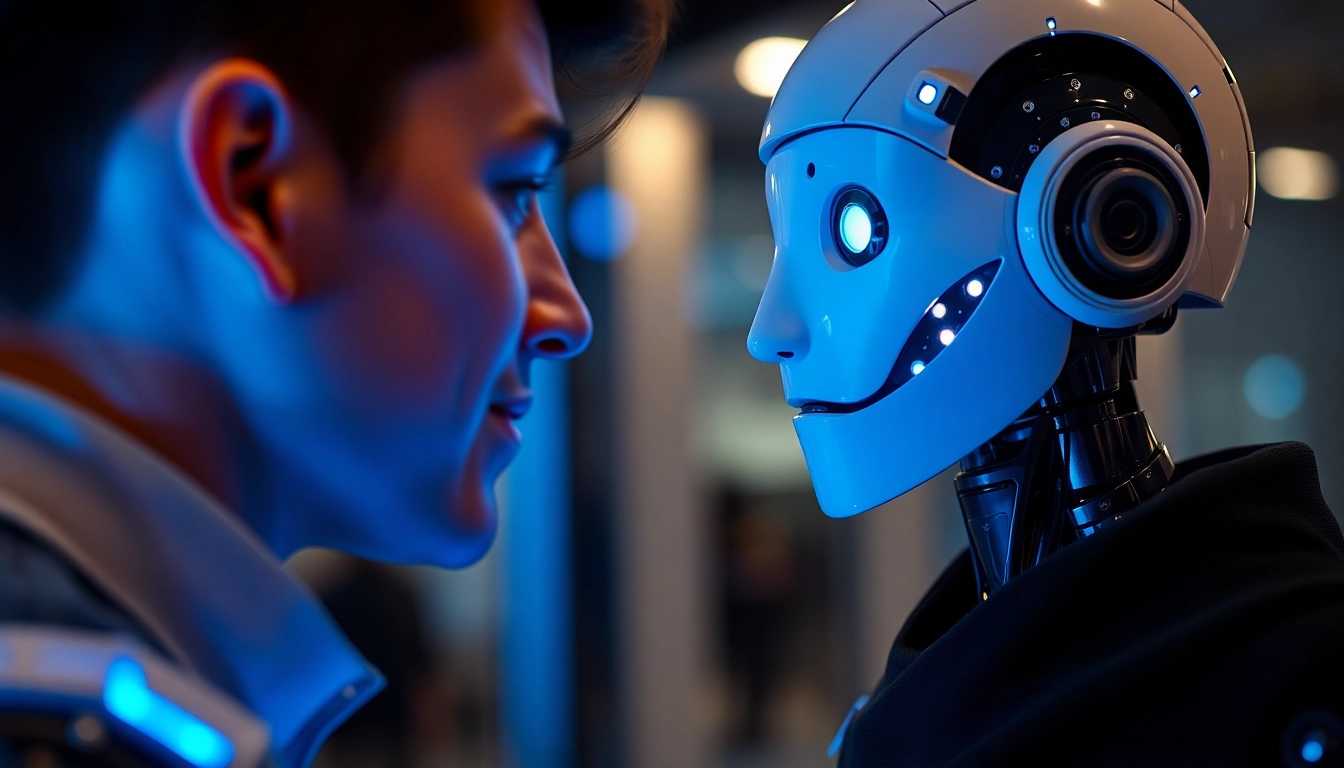
Master the Art of Discerning Human or Not: Your Guide to the Social Turing Challenge
Understanding the Human or Not Game: Purpose and Mechanics
In an era where artificial intelligence continuously advances and blurs the boundaries of human-like interaction, testing our ability to discern between genuine human conversation and AI-generated responses has become both a curiosity and a necessity. The human or not game epitomizes this challenge by presenting a dynamic, real-time social experiment—known as the Social Turing Game—that pushes players to their perceptual limits. It is more than just entertainment; it’s an immersive exploration into the evolving landscape of AI technology and human cognition.
What is the Human or Not AI Challenge?
The Human or Not AI Challenge is a modern digital variant of the Turing test, conceived by Alan Turing in 1950, with the goal of evaluating whether an AI system can convincingly replicate human-like conversation. Unlike traditional Turing tests, which involved complex dialogues in controlled environments, this social game emphasizes quick, two-minute chats between anonymous interlocutors—either human or AI designed to simulate human responses. The core objective is simple yet profound: determine if the entity on the other end of the conversation is a real person or an advanced AI bot.
This challenge is not only a testing ground for AI capabilities but also a mirror reflecting human perceptual skills. It directly addresses questions like: How convincing are current AI language models? Can humans reliably tell the difference? And crucially, how do AI responses influence our daily interactions and perceptions?
For those interested in the technological underpinnings, discovering human or not has become a captivating way to test AI sophistication, especially as models like GPT-4 continue to improve their conversational fluency.
How to Play and Win the Social Turing Test
Engaging in the Game
Participating in Human or Not is straightforward. You initiate a chat with an anonymous partner—either a fellow human or an AI—then converse for exactly two minutes. During this window, your goal is to gather enough cues from the responses to make an informed decision on whether you are chatting with a human or a sophisticated AI. After the conversation, you’ll be prompted to log your guess.
Strategies for Success
Winning the game hinges on sharp observation, critical thinking, and intuition. Here are some effective strategies:
- Pay attention to response flow: Human conversations tend to follow natural, sometimes imperfect, patterns, while AI might produce overly perfect, overly generic, or slightly unnatural responses.
- Notice emotional nuances: Humans often include subtle emotional cues, humor, or contextual humor, which AI may struggle to replicate authentically.
- Ask open-ended or odd questions: Manipulate the conversation with unpredictable prompts to observe how responses adapt.
- Detect response timing: AI responses might be instant and overly consistent, whereas human replies can vary based on mood and distractions.
How to Improve Your Detection Skills
Consistent practice and familiarity with common AI response patterns are key. Regularly playing Human or Not enhances your intuition, sharpening your ability to pick up on the nuances that distinguish human responses from AI ones. Reading about AI behaviors, observing conversations, and participating in online communities dedicated to AI detection can also elevate your accuracy.
Historical Context: From Turing to Today’s AI Conversation
The concept of machines exhibiting human-like intelligence dates back to the pioneering ideas of Alan Turing, who proposed the Turing test as a measure of machine intelligence. Over the decades, technological evolution has profoundly transformed this concept from abstract theory into practical, interactive experiments. Early AI systems could only handle limited tasks; today, models like GPT-4 demonstrate near-human fluency.
Contemporary AI chatbots are trained on vast datasets, enabling them to generate responses that are contextually relevant and linguistically sophisticated. This has made the challenge of distinguishing AI from humans increasingly complex—what once was straightforward has now become a nuanced, layered exchange. The Social Turing Game encapsulates this progress, serving both as a test bed and a showcase for AI advancements.
Recognizing the importance of this evolution aids in developing better detection skills, understanding AI limitations, and fostering more ethical deployment of AI in society.
Strategies to Improve Your Human or Not Detection Skills
Recognizing AI Response Patterns and Nuances
Modern AI language models often exhibit certain telltale signs:
- Repetitive Phrasing: AI may reuse specific phrases or sentence structures.
- Lack of Authentic Mistakes: Human responses sometimes contain typographical errors, typos, or logical inconsistencies, which AI typically avoids.
- Overly Formal or Perfect Grammar: AI responses tend to be grammatically impeccable, sometimes more so than human speech.
- Contextual Limitations: AI might fail to follow complex, multi-turn narratives, or respond with vague generalities.
Critical Thinking and Intuition in Two-Minute Chats
In addition to pattern recognition, honing your intuition plays a pivotal role. Trust your gut—if a conversation feels slightly off, or responses seem too polished without emotional depth, reconsider. Asking probing questions or sharing personal narratives can reveal authenticity or artificiality. Remember, humans often inject personal stories, imperfections, and spontaneous humor that AI might struggle to mimic convincingly.
Common Pitfalls and How to Avoid Them
Despite technological strides, certain pitfalls hinder precise detection:
- Over-reliance on superficial cues: Focusing solely on grammar may mislead, as AI can replicate natural language well.
- Ignoring emotional cues: Missing subtle emotional responses or tone shifts can cause misclassification.
- Assumptions about AI capabilities: Overestimating AI may cause your confidence to be misguided. AI systems improve constantly, and awareness of their evolving strengths is crucial.
To counter these challenges, maintain a balanced approach: combine pattern recognition with intuition and adapt your inquiries based on the conversation’s flow.
Why Participating in Human or Not Matters for Society
Contributing to AI Development Awareness
Engaging regularly in Human or Not informs us about current AI capabilities and helps developers improve future models. It provides vital feedback on AI naturalness, responsiveness, and contextual understanding—all critical factors in responsible AI deployment.
The Impact on Human-AI Interaction Recognition
As AI becomes more integrated into daily life—from customer service to virtual assistants—being able to distinguish between human and machine responses safeguards transparency and user trust. Human or Not equips users with tools to recognize AI influences, aligned with ethical standards and informed consent.
Potential Uses in Education and AI Testing
Beyond entertainment, the game serves educational purposes—training students, researchers, and professionals in AI literacy. It also functions as an informal benchmark to evaluate AI responses, contributing to standards in AI transparency, robustness, and safety.
Advanced Insights and Technology Behind Human or Not
State-of-the-Art AI Technologies Used in the Game
Human or Not relies on cutting-edge AI models, including versions of GPT-4, to simulate realistic conversations. These models process vast datasets, enabling nuanced responses that mimic human language patterns, emotions, and contextual cues. Other technologies include natural language understanding (NLU), sentiment analysis, and machine learning algorithms optimized for real-time interaction.
Privacy and Safety in Human or Not Gaming
The platform places user safety at its core. Conversations are conducted anonymously, and no personally identifiable information is collected without explicit consent. Data encryption, compliance with privacy regulations, and transparent policies ensure a safe environment where users can focus on the challenge without concerns over privacy breaches.
Future of Human or Not and AI Detection Tools
The future promises even more sophisticated AI detection tools built upon advancements in deep learning, behavioral analysis, and multi-modal verification (combining text, voice, and video). Integration of biometric or behavioral metrics could further improve detection accuracy, ultimately leading to applications in security, content moderation, and authentic communication verification.
Join the Community and Elevate Your Skills
Sharing Tips and Winning Strategies
Building a community around Human or Not enriches everyone’s experience. Sharing insights on question techniques, pattern recognition, and intuitive cues helps players improve. Many online forums and social media groups discuss effective strategies, common pitfalls, and recent developments—fostering a collaborative environment for continual learning.
Engaging in Conversations and Feedback
Active user feedback guides the platform’s future enhancements. Participate in polls, submit suggestions for game features, and share your detection success stories. Developers leverage this community input to refine the AI models and ensure the game remains challenging and engaging.
Additional Resources and Related AI/Detection Tools
To deepen your understanding of AI detection, explore related tools, courses, and literature. Resources such as OpenAI’s documentation, AI ethics frameworks, and behavioral analysis platforms complement your skill set and promote responsible AI use.


